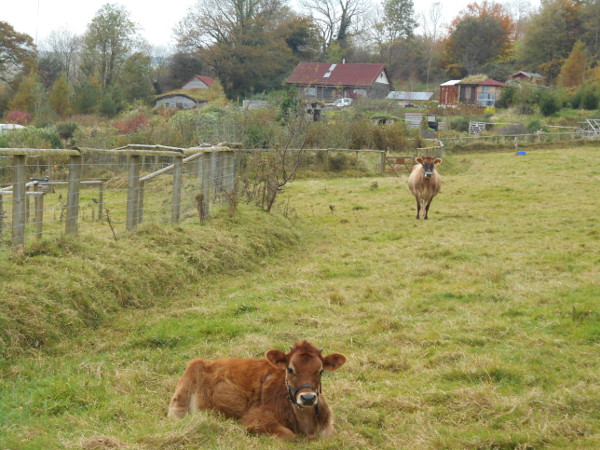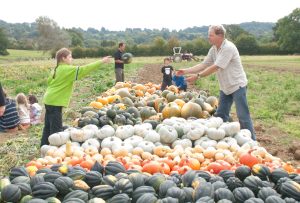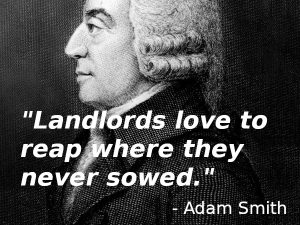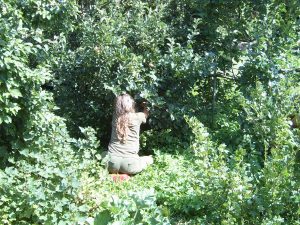The planning system doesn’t currently differentiate between different types of agriculture, and maybe it should. The type of agriculture we prefer could be labelled ‘agroecology’ – but the problem is how to define it and how to get the planning system to recognise it, let alone promote it.
Planner Daniel Scharf is trying to spread the word, via his blog, that it’s easy and desirable for the public to become involved in the planning system and to help change it to allow the kinds of things we’d like to see: agroecology, organic smallholdings, affordable eco-homes, traditional skills, healthy soil, hedges and biodiversity rather than giant, monoculture megafarms, huge animal sheds, pesticides, synthetic fertilisers etc.
Daniel blogs for other planners, and planning can be a complicated business. I’ve added my lay person’s interpretations of Daniel’s article, in brackets below, paragraph-by-paragraph – and got Daniel to check them to make sure that I’m not wildly wide of the mark.
Daniel believes (as do I) that it would be good for the public to understand the planning system more, and to be aware that it’s very open to involvement by anyone – more so than any other area of the public sector. We need to give planners evidence that the demand is there for a working, sustainable countryside that can house smallholders and rural workers, not just commuters and second-homers.
Dave
Over to Daniel.

My argument is that different agricultural regimes affect matters of acknowledged public interest in materially different ways. The procedures through which this could be brought within planning control are quite technical and complex – but that hasn’t been a problem for this or previous governments.
[National planning guidance considers some things ‘in the public interest’, like food security and sustainable development. Dan is arguing that some types of agriculture deliver those things better than others. So could the planning system be used to promote those types of agriculture, and if so, how?]
Objectives: for the purposes of this blog it is assumed that a mechanism is being sought to define the type of agricultural unit that would be most likely to deliver the benefits described here: biodiversity, local employment, low carbon emissions, reduced transport, soil health, water retention/flood alleviation, public health, local food security, and sustainable development.
[For example, organic smallholdings tend to reduce food miles, damage ecology less, provide more rural employment and even provide more food per acre than large-scale monocultures. They are better at delivering biodiversity, employment, a reduction in carbon emissions, better soil health, public health etc. What criteria can we use to define the type of agriculture we’d like to see to deliver these things?]

The first step is for a change to s55 of the Act to stipulate that a change to and from different agricultural (and forestry) uses will be regarded as development for which planning permission will be required, together with regulations to stipulate the criteria against which the character or nature of the holding/planning unit would be judged.
[At the moment, the Town & Country Planning Act (specifically section 55) doesn’t require planning permission to change agricultural land from one use to another, because it’s not considered ‘development’. So if ten mixed, organic smallholdings are merged to form one thousand-acre farm producing nothing but wheat, using pesticides and chemical fertilisers, the planning system has no power to say anything about that.]
Option 1: this would be to create new Use Classes for different and distinct forms of agriculture. The Use Classes would work to classify holdings of a particular character (and possibly size?) so that they would fall within say Use Class AG1, and holdings displaying materially different characters could fall into AG2, AG3 etc – with any material changes between AG1, AG2 being regarded potentially as development requiring planning permission. Secondary legislation in the form of General Permitted Development Orders have been used to specify changes of use of a beneficial kind would not need express permission.
[At the moment, the reason that changes in the use of agricultural land don’t require planning permission is that there are no different classes of agricultural land. The planning system doesn’t recognise any difference in character between small-scale, organic, mixed smallholding and giant monoculture, chemical farming. If there were different Use Classes for agricultural land, that did recognise the difference between these types of farms, and if section 55 of the Town & Country Planning Act was amended to include changes in agricultural uses as ‘development’, then planners would be required to have an interest in it. The big task is to develop criteria and evaluation mechanisms to assess whether a type of agriculture delivers the benefits that national planning guidance says is desirable.]

There are instances where area/floorspace is used as a distinguishing feature and different permitted development rights for agricultural buildings apply to holdings of > 0.4ha, >1ha and < or > 5ha. This might suggest the use of an area of say up to 5ha as one of the criteria most likely to meet the objectives?
[Larger holdings have more extensive permitted development rights, and yet smaller holdings seem to have more potential for realising the advantages of agroecology. So perhaps we need to start favouring smallholdings, not penalising them by not allowing them the permitted development rights of larger holdings.]
Other criteria might be more subtle and even harder to measure. There are measures of biodiversity or natural capital that could be used to distinguish between different holdings either at the point of a possible change of use or, through the use of conditions or obligations attached to planning permissions, to set targets to be achieved over time. I am not sure about how soils could be graded but as carbon is one of the criteria on which the claim of ‘material differences’ is being based, and relates in some way to soil fertility and sequestration, this could be another measure to differentiate between land uses. Employment potential is often assessed in making planning decisions and would be part of this new process. The question of organic or chemical inputs could, in theory, be part of the process of distinguishing between uses but would require detailed accounting beyond the resources of most if not all planning departments. There could be reliance on the accreditation available from the Soil Association but not all organic holdings register. An alternative would be to pass the responsibility onto the farmer who intends to apply inorganic fertilizers, pesticides and insecticides to the land. Annual accounts of inputs could be supplied to the council planners just as books are provided to demonstrate that a farm shop has not become a general store.
[We’ve blogged before about moving the administrative burden away from organic farmers and onto farmers who use synthetic fertilisers and pesticides.]

Regulations or possibly the NPPG could explain how these criteria could be assessed independently or cumulatively to allow an assessment of which Use Class should apply. Where there are substantial areas of a holding that exhibit different characters the ‘mix’ of Use Classes creates a sui generis use – i.e. a use falling outside the Use Classes or benefiting from any permitted development rights.
[Every farm will represent a mix of criteria that would need to be assessed independently to determine which land Use Class it was in. The assessment of whether a farm is in one Use Class or another can be cumulative on a number of elements and a balanced judgement made of the overall character.]
Option 2: as well as a change to s55 of the Act, this option would also require regulations to stipulate the criteria against which the character or nature of the holding would be judged but that, under this option, all agricultural (and forestry?) uses would be regarded as sui generis. This would enable a judgement to be made as to the overall character of an existing farm and then whether any changes amount to a material change of use. Planning controls could then immediately prevent farming from becoming larger and/or more industrialised or carbon intensive. And if and when planning permission is being applied for, conditions could be applied to make the existing systems more sustainable with reference to the agreed criteria.
[Every farm would be regarded as a planning unit of a character to be assessed by the planners based on the agreed agroecological criteria .]

Option 3: this is a radical option that could be considered if the need to change agricultural practices became urgent. There are already powers to discontinue existing lawful uses which (subject to compensation) can be used to require a material change of use to a different type of farm, including any of the criteria relating to sustainability.
[Planning can use Discontinuance Notices to curtail any harmful use of land or buildings but can substitute a less harmful use of the same use but with conditions on how it can operate. Compensation is payable based on the difference in value of the original and the permitted uses.]
Whatever change to the law/regulations is proposed there should be policies put in place to ensure that these new powers are used purposefully and not arbitrarily. Policies at national (ie NPPF and NPPG) and possibly local level (local and neighbourhood plans) should help decide how applications should be determined and if approved what conditions it would be reasonably necessary to impose.
[New policies should be added to national planning guidance to help planners decide what to do about applications for changes in agricultural land use – so that such control is not operated arbitrarily but to achieve the purpose behind the extension of controls to cover agricultural uses.]

This proposal needs much more ‘fleshing out’ but for the sceptics (all practising planners) it should be noted that farmers can already be required to provide very detailed information about any farm gate operation to check whether it amounts to a change of use or is meeting planning conditions/obligations. There are also some extraordinarily difficult judgements to be made in respect of possible differences between catering uses (A3 food, A4 drink and A5 take-away) and between residential uses (C3 dwelling, C4 multiple occupation and sui generis HMO). And that is without reference to the advertisement regulations. All that is needed is the hard evidence that the use of our agricultural land and countryside should change and will need some form of (planning) regulation for it to do so.
[The point is being made to refute claims that planning is not equipped to deal with the fine differences between sustainable and unsustainable farming practices. Planning is already involved in making very fine distinctions.]
Ultimately, it is for the agroecologists to explain what their systems have to offer in planning (public interest) terms – eg climate change, soils, biodiversity, employment, transport etc.

















2 Comments
Hi Daniel. In your opinion, where’s the starting point – a campaign for a new Land Use Class? And if so, how do we start that?
Or as individuals engaging with local plans? (not so sexy, but…)
Or via letters to MPs, or to planners?
Or rely on organisations like the Ecological Land Co-op, Lammas (and I believe a budding organisation in Scotland – the Scottish Farm Land Trust)?
Dave
We should not forget paras 160 and 161 of the NPPF which can be used without legislative change to promote local food systems. However, more substantial progress would be possible through the changes outlined in this Blog. These are not mutually exclusive and it would be necessary to get the power ie through the new definition(s) and advocate permaculture friendly policies. People should do what they feel competent to do. Anybody could and should write their MP but not everybody might feel comfortable making representations on their local and/or neighbourhood plan – important as this will be. A comparable could be drawn with the incorporation of custom-building powers/duties in the Housing and Planning Act 2016. This started with a private members bill and maybe an MP (Kerry Mcarthy?) could be persuaded to promote a change to the definition of agriculture and to the associated permitted development rights?